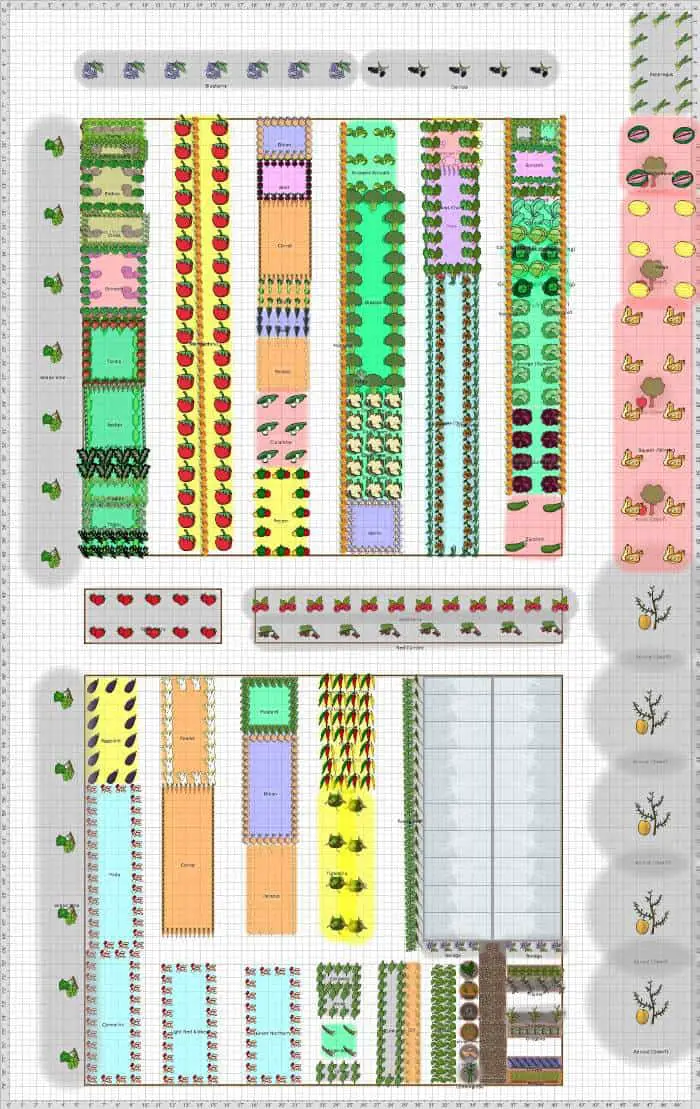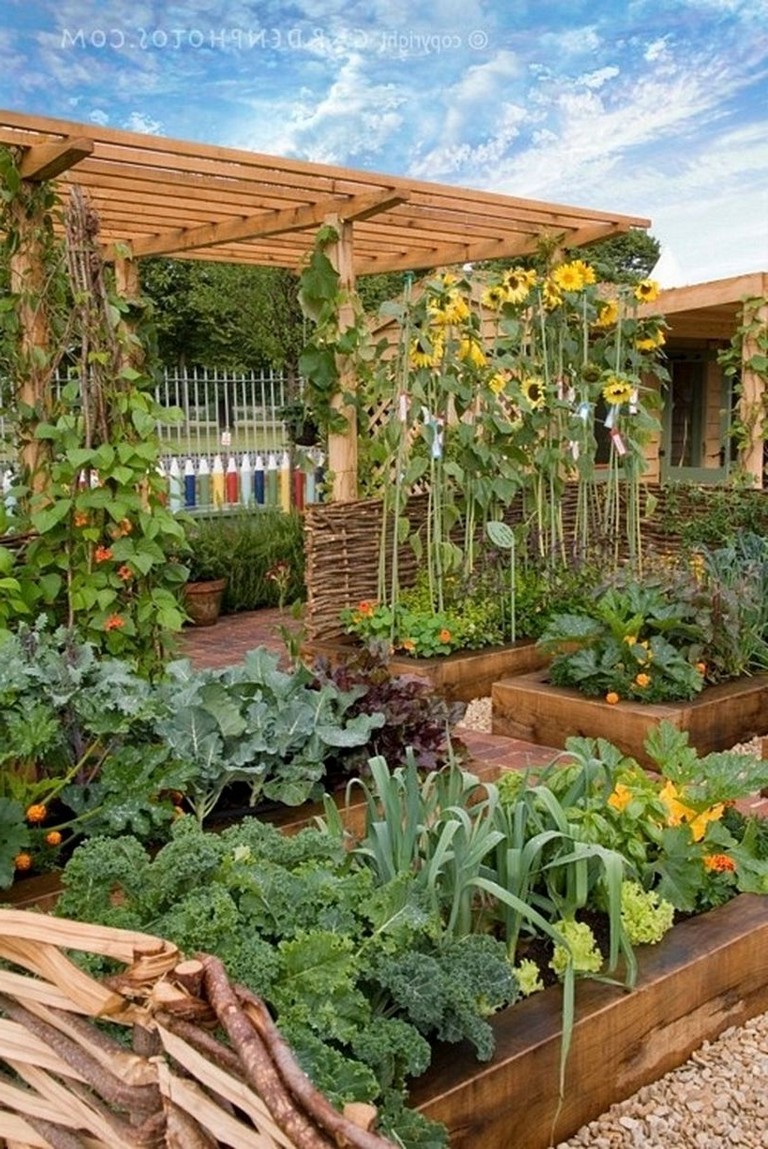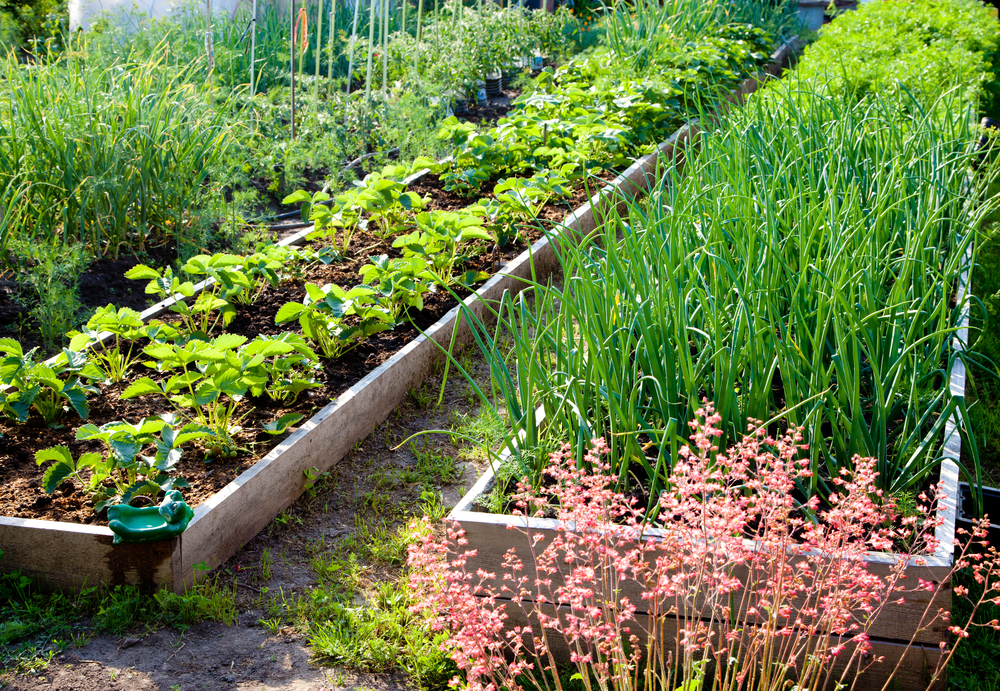
Grow corn in square blocks rather than in rows and try hand pollinating so all of the ears develop well. This is also important for the movement of air and the control of disease.

Give plants plenty of room to grow so they are not crowded. Plant summer squash on the edge of the garden so it can spread on uncultivated ground, or grow bushy winter squash that take less garden space. For peas, try the early, dwarf Alaska variety and the later, rambling, sweet type. Plant onions from seed in mid-March using long-day yellow or red varieties. Plant both leaf lettuce and head lettuce for a season-long crop. Grow the disease-resistant long, slender cucumbers for salads. In heavy soils, try half-long varieties of carrots. Try purple or one of the new white cauliflower varieties that don’t require blanching. Early cabbage varieties produce small heads that taste great cooked or in salads. Plant bush beans for early pods, or pole beans for a later crop with more flavor. When selecting plants for a beginner’s garden, keep in mind several suggestions. What should I keep in mind when selecting plants? Later, as skills develop, add more difficult crops such as small fruits and perennial vegetables, and add more area to the garden’s size.

Plant 100 square feet or less per person in a household, and grow the easiest crops the first year. Which vegetables grow well in this area? What soil types are common? Are there unique conditions in the garden to consider, for example, high winds, compacted soils, poor drainage and wet spots? Finally, what are the first and last frost dates, and what is the length of the growing season? How should I plan how many vegetables to plant? To plan a successful garden, ask some questions. Beds have 0.5m wide paths between which allows a wheelbarrow along to put compost on beds when appropriate.There are a few other usable areas, notably a small 2m*1m area for growing kale and chard in an area where other things do less well and a 1m*2m bed right by the house which only gets 4 -5hrs a day sunshine but can be used successfully for either shallots or lettuces.I’m actually finding that planting right in the middle of a 1.5m wide bed is challenging, particularly for transplanting, but overall it works well.I tend to plant crops across the beds, as that gives you greater flexibility to sow successionally and I’ve tended to use planting densities a bit higher than those recommended by commercial growers.Regardless of where one lives, growing conditions are bound to be different from the conditions described in most gardening books. In addition, there is a dedicated asparagus bed (5m*1m) and boundary beds at the northern end where the most sun is to be found.

I currently use four 5m*1.5m no-dig beds, with a 3m*1.5m and a 3m*1m making up a fith 7.5sqm area. Besides for the shade in the afternoon is there any benefit in planting one direction or the other? Thanks for being there to help us. I plan on planting the plants that can’t take as much heat closer to the house going north to south parallel to our house so they only get morning and early afternoon sun and more hardy plants between those and citrus garden going east to west to break up the straight walkways which takes me out of my comfort zone. We have decided instead of planting our gardens in the back of our property we will fill that space with several 2′ X 8′ sf gardens. There is 19′ between that and the carport. We have a 6′ X 16′ square foot citrus garden with satsumas on one end and kumquats on the other end.

I tell all the young people I know that they should never get old because it sucks. I know 2′ x 8′ seems awfully narrow but as we get older it gets more difficult to do any reaching past actual arm length without leaning too much. We live in south Louisiana where it’s hot and humid for months on end so the weeds and grass can take over very quickly and has caused us to lose our desire to garden at all. We’re not pressed for space by any stretch of imagination so we’re making 2′ X 8′ beds with 18″ or 2′ walk ways between and covered with mulch so we don’t need to mow. I understand the point of wasted space for walkways but I’m so OCD that I just can’t do it any other way. I don’t like having to step on plants and compact the soil when walking in the bed. We’ve tried beds that were 4’X 8′ but the middle was too far away for us to comfortably reach the vegetables and the weeds.


 0 kommentar(er)
0 kommentar(er)
